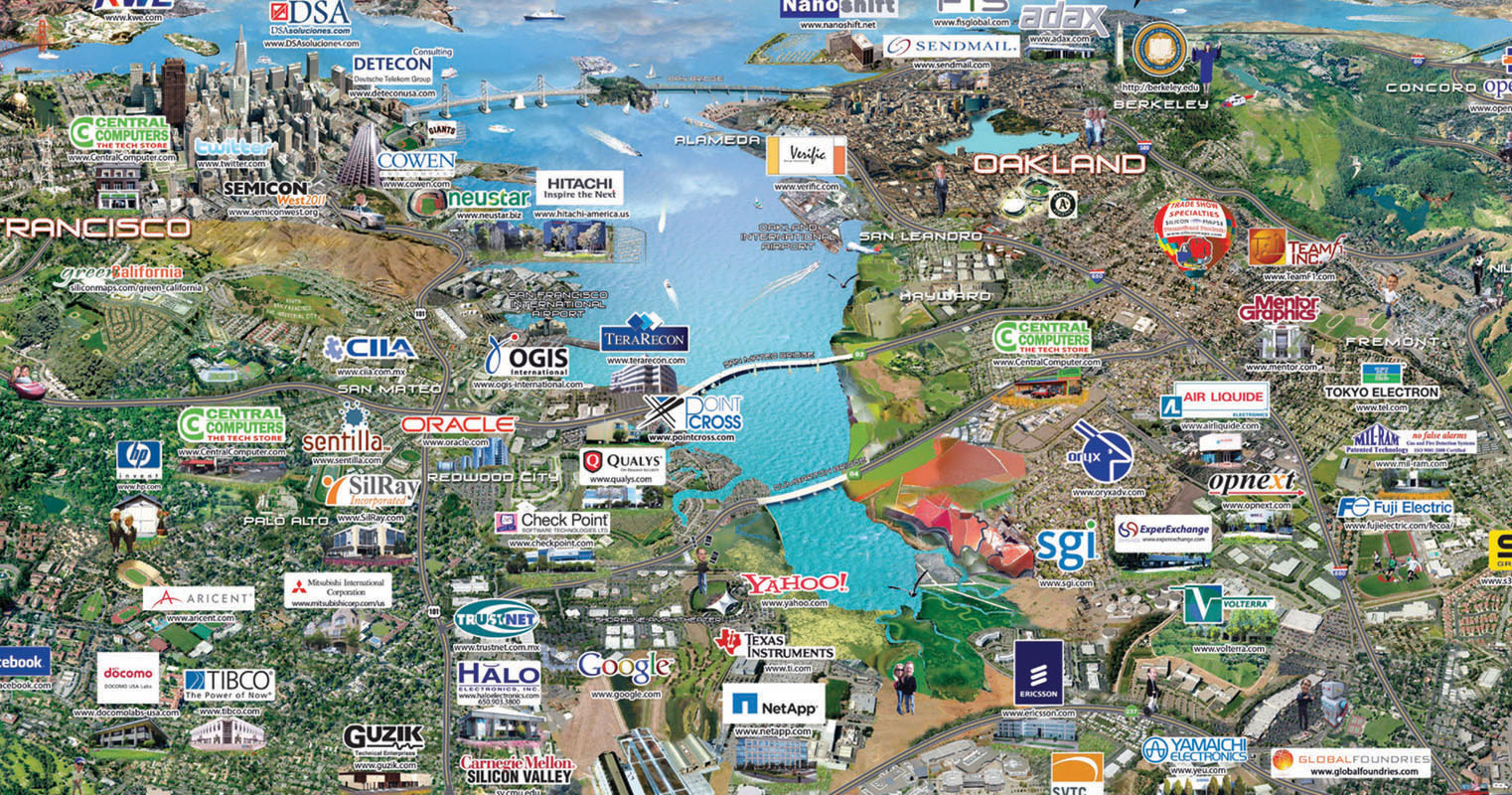A Tale of Two Research Clusters
Silicon Valley in California and Route 128 in Massachusetts are the preeminent high-

In the early 1950s Stanford created the Stanford Industrial Park, leasing university land to high-
This pattern repeated: one researcher estimated that in small and medium-
On the other side of the country, a high-
But early on, Route 128 differed from Silicon Valley in significant ways. It was much more spread out and its firms were larger, reflecting the needs of defense contractors during the Cold War. And MIT extended little help to Route 128 firms.
Another major difference between the two clusters was in how firms were organized. Route 128 firms tended to be “vertically integrated,” combining the entire chain of production from research to design to production in the same firm. Silicon Valley firms focused exclusively on research and design, contracting production out to specialized firms to achieve economies of scale. In contrast to the fluidity of employees and ideas across companies in Silicon Valley, Route 128 firms emphasized a commitment to lifetime employment and closely guarded their innovations.
The 1970s and 1980s were harsh for Route 128. Military spending dried up, and it lost its edge in minicomputers when Apollo Computers lost its preeminence to an aggressive Silicon Valley firm, Sun Microsystems. By 1980, electronics employment in Silicon Valley was three times that of Route 128. Over time, Route 128 ceded the advantage to Silicon Valley in electronics and networking. Today its niche is in biotechnology, genetics, materials engineering, and finance.
Questions for Thought
Question
1. What positive externalities were common to both Silicon Valley and Route 128? What positive externalities were not common to both? Explain.
Question
2. What factors made Silicon Valley such a fertile place for startups? How did these factors interact with one another? What inhibited startups in Route 128?
Question
3. In hindsight, what could Apollo Computers have done to maintain its advantage in minicomputers? What does this tell you generally about research clusters?